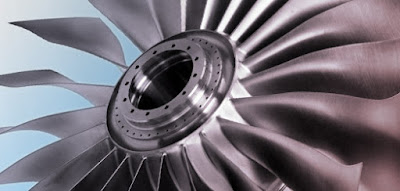All about Brayton
The thermodynamics behind the functioning of the gas turbines is the Brayton cycle. This cycle consists of four processes which may be closed or open. In a closed cycle, the working fluid is circulated within the system after a complete cycle as in the case of steam turbines. In open cycle, the working fluid enters at the inlet and leaves at the exhaust of the cycle as observed in the cast of turbojets and turbofans. The cycle consists of 2 isobaric (constant pressure) and isentropic (constant entropy) processes. The following processes occur in the gas turbine:
1. Isentropic compression (1-2)
2. Isobaric addition of heat (2-3)
3. Isentropic expansion (3-4)
4. Isobaric removal of heat (4-1)
However, compression and expansion processes do not occur in isentropic manner, increasing the compression ratios is the most effective way to increase the output of Brayton cycle.
1. Isentropic compression (1-2)
2. Isobaric addition of heat (2-3)
3. Isentropic expansion (3-4)
4. Isobaric removal of heat (4-1)
 |
| Brayton cycle for P-V and T-s diagrams |



Comments
Post a Comment